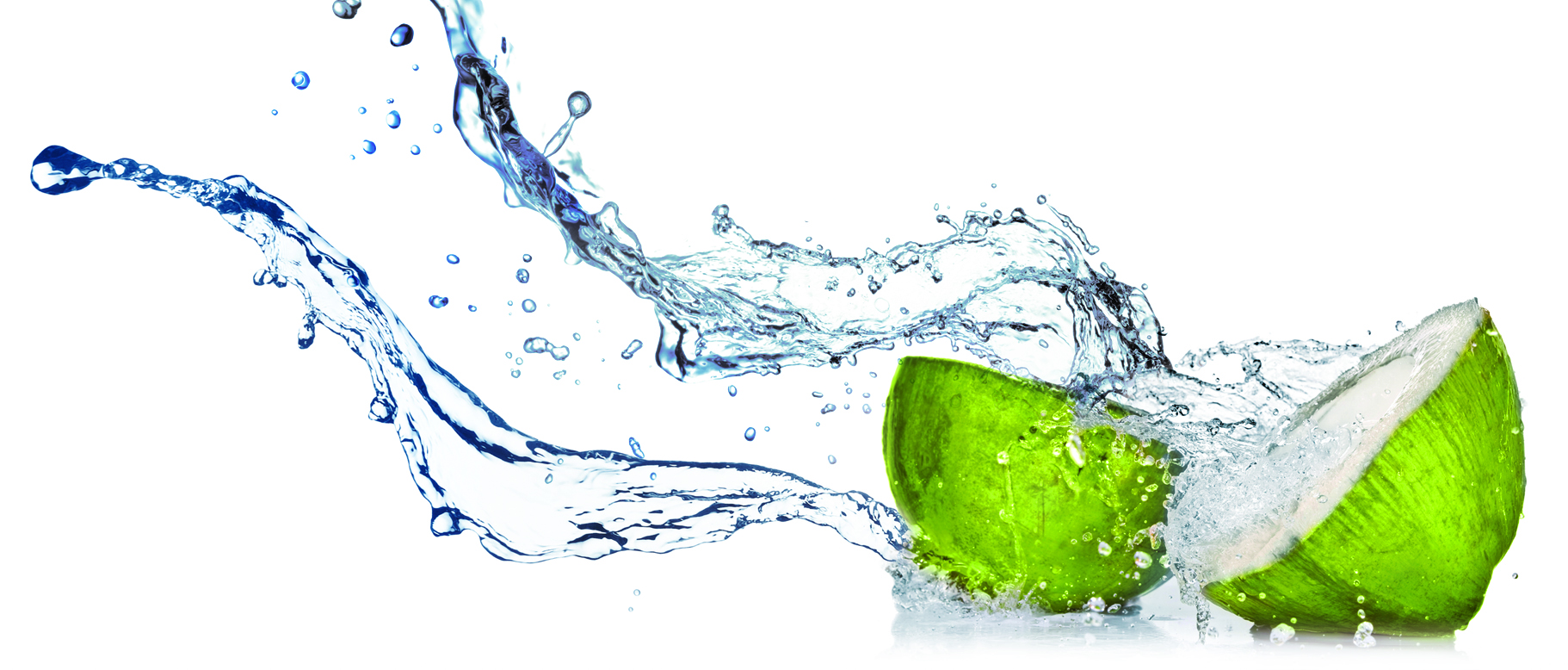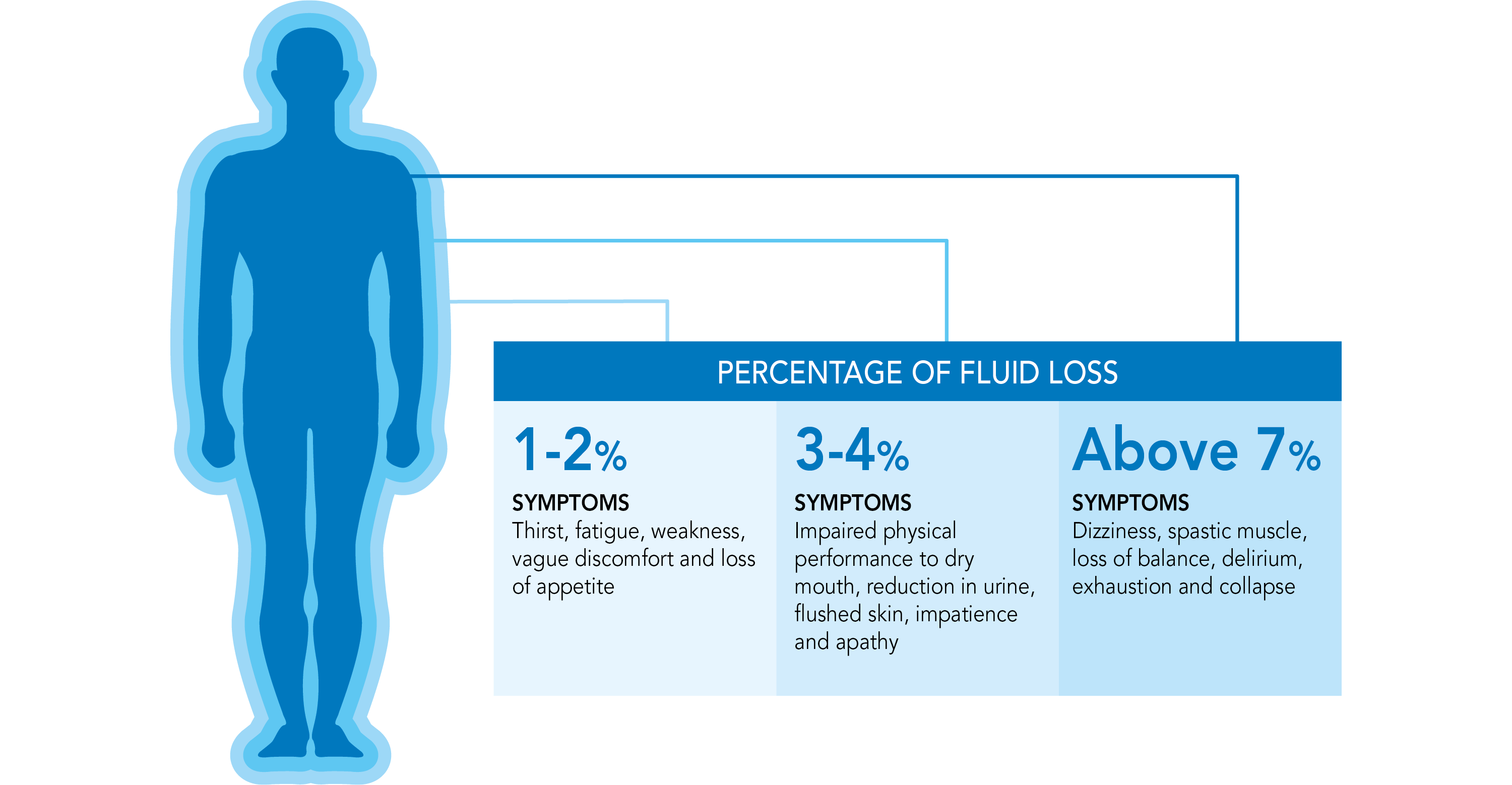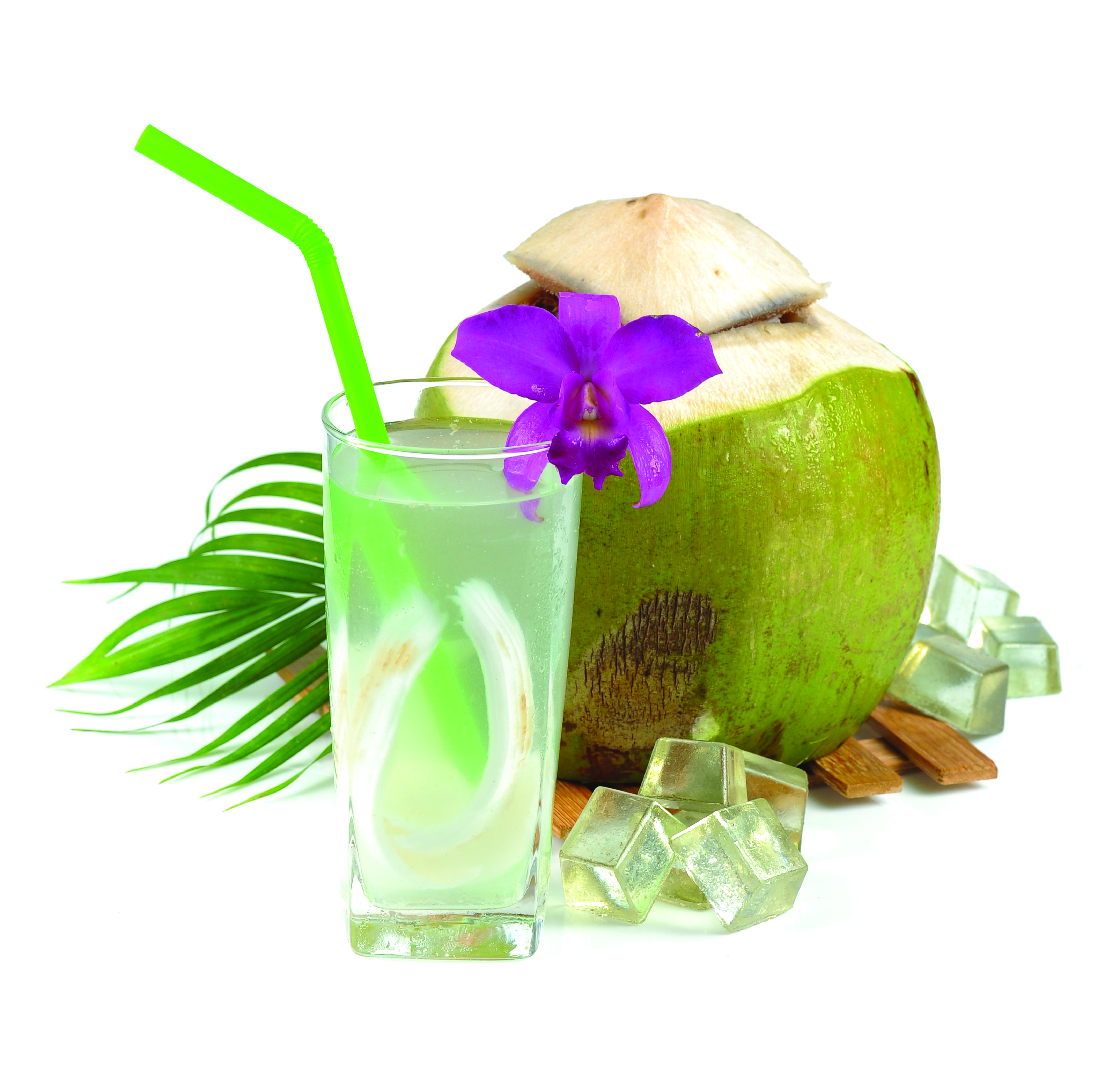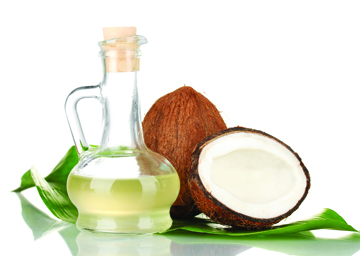Nutritional and Health Benefits
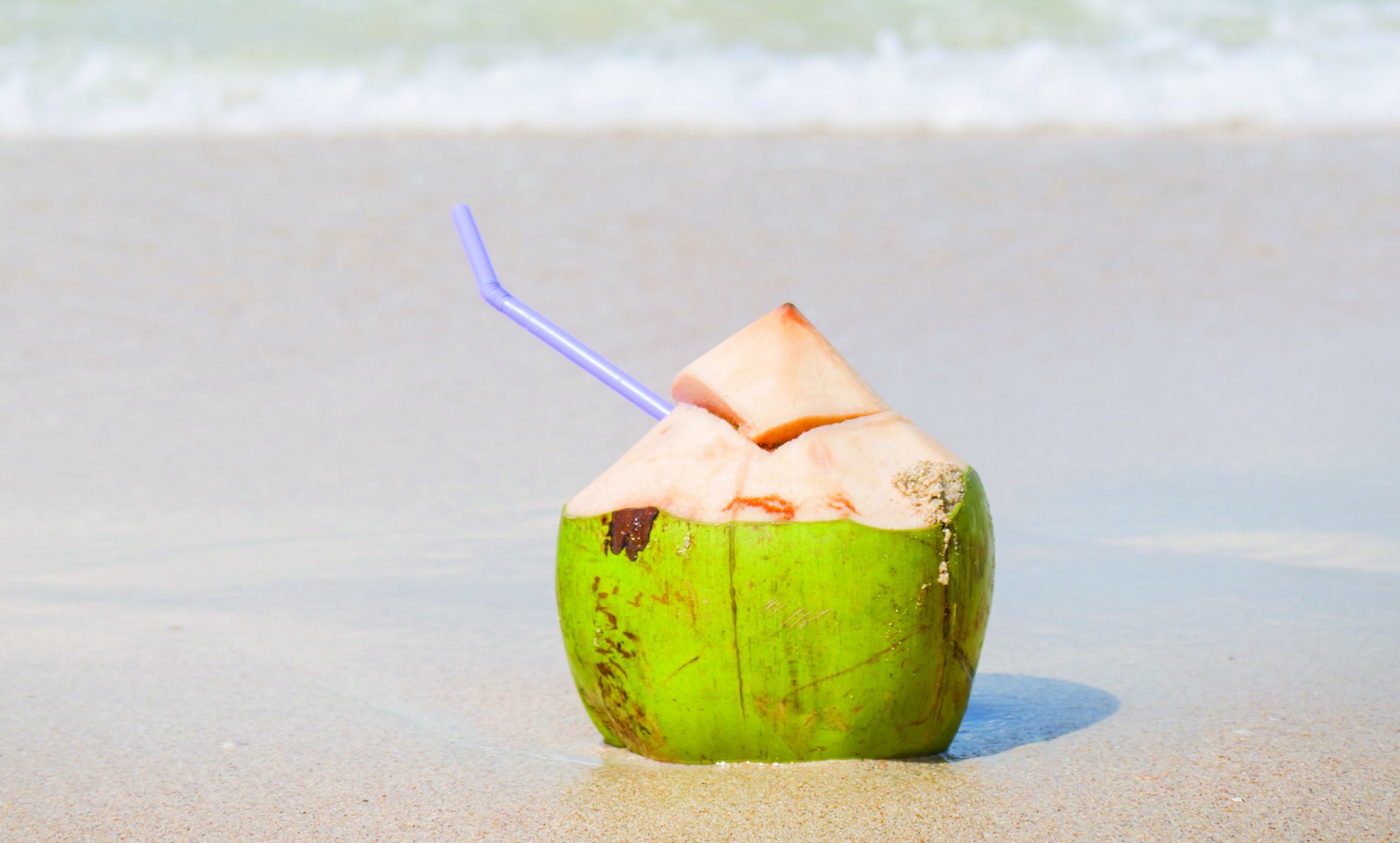
Long life coconut liquid products like coconut milk based, coconut water based beverages, coconut milk or cream, are sterilized by undergoing strong heat treatment to inactivate microorganisms and heat resistant enzymes. As such, they can be stored for long periods of time at ambient temperatures without bacterial growth.
Drinking straight from the nut, coconut water makes a refreshing drink that rehydrates efficiently. Naturally low in sugar, it contains lesser calories than the same amount of isotonic sports drink.
The sweet, energy-rich coconut kernel can be enjoyed as a snack. But more often, it is desiccated or processed into coconut oil, milk or cream for easy consumption as a staple cooking ingredient.
Coconut milk is also lactose free and suitable for consumers allergic to dairy products. With a significant oil component consisting of more than 45% lauric acid (C12) which is a constituent of readily metabolized medium chain triglycerides (MCTs), coconut milk is easily absorbed by the body, and is considered a good source of energy.
Coconut water
Coconut water is a natural, fat-free drink. Low in sugars and calories, it is rich in essential electrolytes and vitamins. Dubbed the “fluid of life”, coconut water is safe for everyone to drink fresh from the nut. As the Hawaiians say, coconut water is “dew from the heavens”.
With the presence of hypoglycaemic and hypotension - inducing compounds such as calcium and potassium, coconut water contains potential health benefits necessary for overcoming common diseases such as diabetes and hypertension. Kinetin, the growth hormone which aids cell repair and regeneration, is also presenting coconut water.
More importantly, coconut water is an effective rehydration fluid, suitable for oral and intravenous consumptions.
Rehydrating the body
The human body contains mostly water. It constitutes a major part of our body cells. Water that is found within the cells of the body is known as intracellular fluid. About two-thirds of bodily fluid is found in the intracellular space of the cell. The rest is found in the extracellular space between cells, and the blood plasma.
Playing an important role in our bodies, water cushions and lubricates the brain and joints. It transports nutrients to and carries waste away from cells. It also helps regulate our body temperature by redistributing heat from active tissues to the skin, cooling our bodies through perspiration.
Quick to respond to water imbalance, the body naturally adjusts water intake and excretion through homeostatic control mechanisms. When there is insufficient water intake, our blood becomes concentrated, lips turn dry, and the hypothalamus, better known as the brain centre that controls water balance, initiates drinking behaviour. On the other hand, when there is excessive water intake, the stomach expands and stretch receptors send signals to stop drinking.
However, the body’s natural mechanism causes a water lag. By the time a person feels thirsty and needs a drink, the body has already lost some of its fluid. When the body loses too much water that is not replaced in time, it suffers from dehydration. Typical symptoms of fluid loss can vary from fatigue, weakness to dizziness and loss of balance (Figure 2.1).
Typically, our bodies experience changing water levels, which requires fluid replenishment to balance dehydration and rehydration accordingly. As seen in Figure 2.2, the water level drops after the body performs a series of activities, resulting in dehydration. This requires fluid replenishment. After rehydration, water levels rise back to normal again.
However, it can be challenging to achieve sufficient levels of rehydration solely by drinking plain water. Even though it quenches our thirst, it may not be an effective rehydration fluid for our bodies. As we often lead fast-paced lifestyles, our bodies may need a Better Rehydration Fluid (BRF) to rehydrate within a shorter timeframe.
For example, a rapid and complete restoration of fluid balance is necessary during a marathon. Runners need to keep hydrated within seconds and not pass out running long distances. Ingestion of high volumes of water may cause a fall in plasma sodium concentration and in plasma osmolality, resulting in excessive production of urine whilst delaying the overall rehydration process.
As such, our bodies require BRF to replenish fluids faster. To speed up the rehydration process, they usually contain important body electrolytes (salts that dissociate into ions) like sodium, potassium, calcium, magnesium, chloride, bicarbonate, phosphate, sulphate, organic acids and proteins in smaller volumes. This is why carbohydrate-electrolyte sports drinks are popular as a rehydration fluid among athletes.
However, these drinks may not be an ideal BRF for ordinary consumers. Often, sports drinks contain added liquid sugar or high fructose corn syrup to provide energy for working muscles during exercise. For regular, low impact activities, these additional calories may add up for ordinary consumers.
Electrolytes for rehydration
Unlike plain water, the presence of natural electrolytes in BRF can help the body achieve rapid recovery of fluid loss and find its balance. This is because electrolytes attract clusters of water with the slight negative charge of the oxygen atom and the slight positive charges of hydrogen atoms in water (H2O) (Figure 2.3).
To be compatible with the human body, the BRF should contain sufficient electrolytes. So that when it is ingested, urinal output will be reduced and the net water balance is regained and maintained at normal levels.
Rehydrating with Coconut Water
Due to its ability to rehydrate the human body with its nutritional content, coconut water is also known as “Nature’s Isotonic”. Compared to other beverages, the human body can absorb coconut water’s fluid levels and electrolytes more quickly and efficiently. It is a good and natural rehydration alternative to plain water and sports drinks.
Unlike most varieties of sports drinks, coconut water is low in calories, carbohydrates and sodium. In addition, it contains moderate to high levels of important electrolytes, especially potassium, magnesium and calcium. As such, it complements a high potassium and low sodium diet, reduces the overall risks of chronic diseases and lowers blood pressure levels in general.
While studies have shown that there is no significant difference between rehydrating with coconut water and sports drink, these fluids are significantly better than water. More importantly, rehydrating with coconut water causes the least stomach upset.
Health benefits of coconut water
Coconut water hydrates and cools the body. Regarded as a natural stress reliever in traditional Ayurvedic medicine, coconut water is widely used to remove bodily heat, thus effectively treating pimples, boils, sun burns and hot flushes. The latter is frequently experienced by menopausal women.
Coconut water is also a natural diuretic. It increases urine flow and flushes out waste products from our bodies.
As a digestive health booster, coconut water, when combined with spices like cinnamon, cardamom, ginger, cloves, garlic cumin, coriander and turmeric, can be used to promote better health metabolism. These combinations can also be used to treat those suffering from digestive problems. When treating diarrhoea, coconut water has been proven effective to swiftly replace lost bodily fluids.
Last but not least, coconut water is rich in cytokinins, which is a group of hormones that regulate growth, development and ageing in the human body. Research suggested that consuming a rich source of cytokinins may produce an anti-ageing effect on the body. This could in turn, lead to a lower risk of developing degenerative and age- related diseases.
Coconut milk
When processed from the kernel, coconut milk is a staple food for many.
Health benefits of coconut milk
Through the reversal of glycogen levels, studies have shown that the coconut kernel have a potential anti-diabetic activity useful for preventing diabetes.
At the same time, coconut milk can possibly have other anti-diabetic activities, specifically the reversal of carbohydrate metabolizing enzymes, and the reversal of pancreatic damage by an amino acid called arginine.
Another study further shows that coconut milk contains a protein which displays immunostimulatory activity. This protein has the potential to increase the levels of red and white blood cells, platelets, neutrophils, monocytes, eosinophil, B-lymphocytes, T-lymphocytes and Hb, all of which are important components in building the body’s immune system (Manisha et al., 2011).
Coconut oil
A fresh coconut (wet kernel) contains about 33% coconut oil. It contains more than 90% saturated fatty acids. While an earlier epidemiologic study suggested that consuming large amounts of coconut oil, consisting of saturated fats, can lead to high blood cholesterol, later clinical studies have otherwise shown positive outcomes about the virgin coconut oil (VCO) (Marina et al., 2009).
Medium chain triacylglycerides (MCTs)
Coconut oil is rich in medium chain triacylglycerides (MCTs). The term is used to describe one form of neutral lipid, which contains fatty acid molecules with a chain length varying from six to 12 carbon atoms. Otherwise known as triglycerides, it is especially high in lauric acid, a 12-carbon saturated fatty acid which makes up to 45% of the triglycerides present in Virgin Coconut Oil (VCO).
When fatty acids or triglycerides are absorbed into our bodies, they are repackaged into small bundles of fat and protein called lipoproteins. They are circulated into the bloodstream to other parts of the body. These fatty acids are then deposited into our fat cells.
However, MCTs are digested and utilized differently from the long chain triglycerides (LCT). Instead of being packaged into lipoproteins, they are sent directly to the liver where majority are converted into energy and hence, less get stored as body fat.
Health benefits of coconut oil
Contrary to popular belief about saturated fatty acids, MCTs are readily metabolized as an energy source. It is often claimed that MCTs in coconut oil can increase our bodies’ resting metabolic rate, leading to long-term fat loss. Some research has demonstrated that VCO can increase thyroid activity, which corresponds to an increased metabolic rate, helping subjects lose weight in the long run.
Containing 65% MCTs, Virgin Coconut Oil (VCO) is directly transported to the liver and rapidly metabolized and thereby participates less in transporting cholesterol to other parts of the body. As such, VCO can potentially help to lower overall cholesterol levels, triglycerides, phospholipids and a variety of lipoproteins.
Strong antimicrobial properties
MCTs like lauric acid (C12) can be effective in safeguarding human bodies against a range of bacteria, such as E-coli and bacillus subtilis. Because of these anti-microbial properties, coconut oil can be topically applied to the skin to get rid of bacteria like staphylococcus aureus, which is commonly associated with acne and pimple problems. At the same time, coconut oil can be used to moisturize the skin.
Containing 45% lauric acid, some studies have shown that coconut oil can be used to kill pathogenic gram-negative bacteria with an appropriate chelator. By consuming coconut oil, it is useful in supplying monolaurin to the body, producing a source of lauric acid which meets dietary needs.
Furthermore, monolaurin’s antimicrobial spectrum can impede spore germination and radial growth of infection-causing fungal species. It has been reported that monolaurin can kill all members of the herpes simplex virus (HSV), which plays a role in forming atherosclerotic plaques that leads to heart disease. Fatty acids and monoglycerides from saturated fatty acids ranging from C6 to C14, which includes approximately 80% of fatty acids found in coconut oil, can also kill HSV (Manisha et al., 2011).
Last but not least, MCTs in coconut oil have also been reported to also disrupts membranes of viruses and interrupt their assembly and maturation, resulting in an antiviral effect against lipid-coated viruses, such as influenza virus, pneumono virus and hepatitis C virus.
